Speak to an Africa expert today.
Start planning your tailor-made Africa holiday

Alistair
Travel Expert
Expert advice on the best time to visit Africa and where to go.

A few years ago, I used to have a very enthusiastic North American colleague whose response to the question:
‘When is the best time to go to Africa?’ was to bellow down the phone ‘As soon as you can get there!’
It made us all chuckle in the office but to answer the question is not as straightforward as you might think. The continent of Africa is enormous and comprises 54 countries and measures about 5,000 miles north to south and just shy of 4,600 miles at its widest point east to west making it larger than the land mass of USA, China, India and most of western Europe combined. The weather as you might expect is quite varied, from the hot deserts of the Sahara in the north to the tropical rainforests of equatorial Africa meaning different times of the year offer very different experiences.
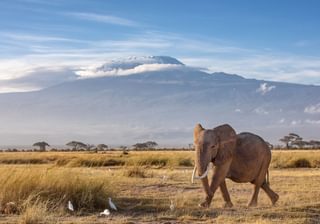
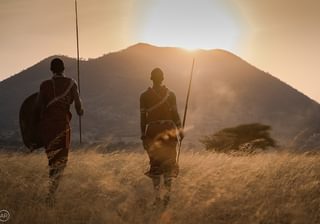
Weather is not the only factor affecting when the best time to visit is, a large determinant is whether you will see wildlife in specific areas or vast numbers: after all safari is one of Africa’s greatest USP’s. The animal movement is often determined by the weather patterns and although consistent, nature is not always your friend when planning a trip. Remember, nothing is guaranteed, but having been involved in planning safaris for the last 2 decades, there are plenty of highly satisfied customers out there for whom we have got it right.
For this blog, I will talk about the main go-to areas, with a focus on East Africa (Kenya, Tanzania, Uganda and Rwanda), Southern Africa (Zambia, Zimbabwe, Botswana, Malawi, Namibia and Mozambique) and then South Africa on its own. It’s a huge country with complex weather patterns. I will also look at Sao Tome and Principe and St Helena, in the Atlantic and touch on the Indian Ocean islands of Mauritius, Seychelles and Madagascar. All of these destinations are either in the southern hemisphere of the tropics, so when it’s our summer it’s their winter but don’t let this put you off, often the best time to visit the majority of these destinations is in July, August or September – temperatures are palatable, rain is scarce and has been for a while so the flora is not as dense and there is less standing water. Generally speaking, these factors make for an amazing game experience. The lack of rain offers a lovely stay on some amazing beaches – on the mainland or on one of the islands in the Atlantic or Indian Oceans.
The Equator slices through Uganda and Kenya and sits just north of Rwanda and Tanzania making all these countries qualify for ‘tropical’ status, where temperatures don’t vary enormously. Seasons as we know them exist only as 'wet' and 'dry' and the sun sets predictably at almost the same time every night. As a rule of thumb, most people avoid the ‘long rains’ as it tends to do what it says on the tin and precipitation can be heavy and uninterrupted for a few hours to a few days. A good proportion of camps close during this time, which allows them to do any outstanding maintenance or refurbishments without guests. There is a second rainy season called the ‘short rains’ (Oct-Nov) which (again generally speaking) follow their name and offer shorter sharp showers, generally in the afternoon. Most lodges (aside from some in northern Kenya) are open as usual during this season, it's considered the 'shoulder season' so there are better prices and more availability to be had. I would have no hesitation in travelling in the short rains in the knowledge that there may be the odd shower if it meant a slightly less expensive trip with more variety to choose from and the ability to book a bit later.


The long rains probably start earlier (March) in Uganda and Rwanda as they are two mountainous countries that are covered in dense green flora and home to enormous rainforests. Whilst some rain in either of these countries is commonplace throughout the year we do suggest avoiding the heavier seasons. The star attraction in these two countries are primates, principally Mountain Gorillas, and whilst they are happy to sit in the rain all day it doesn’t make for a pleasant, strictly timed hour with which you are with them, especially for photography. It also makes the trek, which can be moderately steep at times, quite slippy and less enjoyable. The short rains in Rwanda and Uganda are also more intense than their neighbours but we would say that it's not a no-go zone and Gorilla trekking happens year-round regardless of the weather. The best time to visit would be anytime within these times: June – September and December- February.
Kenya and Tanzania are both blessed with what is known as ‘black cotton’ soil. A highly fertile dark clay soil which can capture moisture and can make driving whilst in some national parks quite tricky, another reason we suggest avoiding the months of April and May, however, some of our regular clients love this time of the year as places like the Masai Mara and Serengeti are beautifully green, less dusty and you tend to have the place to yourself. You are also likely to see quite a lot of juvenile fauna at this time.
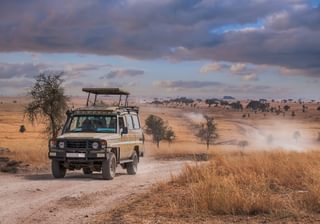

In Kenya the rest of the year is fine, temperatures under blue skies will be in the early thirties and the heat inland will be dry – so very pleasant. The main talking point in Kenya is the wildebeest and zebra migration which makes its way into The Masai Mara from The Serengeti as early as late July and hangs about in these rich pastures until early October, roughly. At this time you will see huge volumes of game, lots of action and even potentially a river crossing with huge Nile Crocodiles lying in wait. It’s the most popular time to come and as its UK/US school holidays expect to see plenty of others. During this busier time we tend to suggest looking at the conservancies to move away from the traffic, the game is still excellent and the experience a less hectic. My favourite time to travel would probably be late September time – you might get the tail end of the migration, its stunning up in Laikipia at this time of year and schools have gone back so the place is a little quieter. Having said that, early January through to mid to late march offers lovely winter sun, good game and quieter parks. For coastal areas avoid the long rains, Lamu is better in the early part of the year (Jan – Mar) and watch out for heavy seaweed at Watamu in July/August time.
See trips to Kenya
Tanzania’s year revolves around the migration. This phenomenon works its way around the Serengeti from October when the animals cross back south from the Masai Mara until late July/August when they start to take the plunge to cross back into the Masai Mara once again. During that time these vast herds move in a clockwise rotation through the entire park. October to December they make their way down the eastern side of the Serengeti; in January, they are as far south as they will go, enjoying the open pastures of Ndutu and the Ngorongoro Conservation area; they then move around to the Grumeti/Western Corridor area during the rains before heading north again in July. The migration moves throughout the year, so you can see it at any time of the year so long as you are in the right place. The archipelago of Zanzibar follows the long /short rain pattern and there is just a difference in wind patterns between the Kaskazi (Dec-Mar) when the lesser breeze comes from the north and the Kusi which blows stronger from the south.
Like its neighbours in East Africa, the peak time to visit the parks of southern Africa is in their dry winter season, June through to October. The rains come in earnest from the start of the year and then it dries out and is very pleasant indeed with big blue skies throughout the winter and starts to get warmer in September and can get quite hot in October before the first rains come in November. These tend to start quite sporadically as showers before coming down heavier as you move through the festive period and into New Year. Different countries are affected in diverse ways, a lot of Zambia is closed, less so in Botswana which is not as severely affected, Namibia is open year-round, but it gets stiflingly hot in the summer months and southern Mozambique is good all year apart from cyclone season in February/March time.

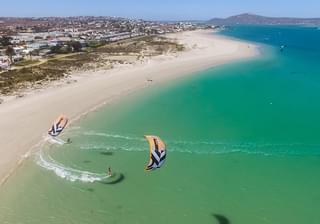
This country has the shortest season of all safari destinations. Things open from mid-June and carry on without a drop of rain right through until November. As the groundwater dries up and the flora gets eaten by the herbivores the game viewing gets better and better. Temperatures start rising in September and October can be a little uncomfortable in the afternoon sun. Most camps are seasonal due to rivers bursting banks and flood water moving through the various parks so it's almost impossible, or certainly ill-advised to organise a trip outside of the June to November window. Anytime within that period, you are guaranteed an amazing safari.
See trips to Zambia

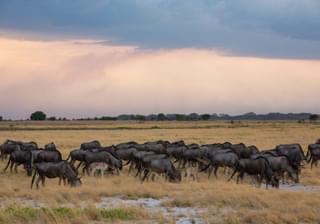
Everyone wants to be in Botswana when the Okavango Delta is in full flood, and for good reason. This is the only inland delta big game safari experience you can enjoy in the world, let alone Africa. The sweet spot is (yes you guessed it!) their wintertime – July-August tends to be when the flood is at its greatest. Now this leads to confusion as it’s the dry season but it's in flood. How does that work? Botswana is subject to the same rain pattern that affects Zambia and its neighbour to the north, Angola. The rains come down in the central Angolan highlands towards the start of the year and make its way down as runoff into the Okavango River flowing until it reaches the flat plains of the inland delta and comes to a stop, creating a huge temporary crystal clear and shallow reservoir, surrounding thousands of tiny islands where the cats and other non-water loving animals congregate. It’s at this time of year when game viewing all over Botswana is at its best. Having said all this Botswana is a year-round destination offering some good deals in the ‘Green’ or ‘Emerald’ seasons. The Delta may not be in flood but some camps have access to permanent water and just because the flood waters disappear does not mean the game does too, it’s just a slightly different experience. October or November is an enjoyable time to go, albeit you may get some rain but it’s calving season so the chance of seeing young is good.
See trips to Botswana
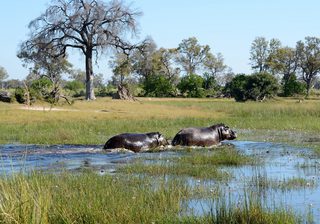

A relatively straightforward beast. The summer is hot (I mean that) and can be wet and the winter offers good conditions to explore the landscape. In the winter months of July and August, you are more likely to get a chance to see the desert elephants but if you go to the right spots this can happen year-round.
See trips to Namibia

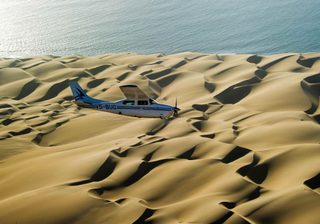
At this point, the north of Mozambique is off-limits due to violence over the oil and gas reserves located up there. It is a hugely long country, so long that the north and south have different seasons. I would suggest the best time to visit for guaranteed sunshine and the warm Indian Ocean is anytime between April and November when there is little rain, and the enormous skies are blue. Rain starts in and around mid to late November and gets heavier as the year goes on, we suggest avoiding hurricane season in Feb and March. During July and August, it's pretty much guaranteed sunshine but temperatures will not go beyond 30 degrees, so comfortable.


This country is huge and offers so much to any visitor, so it's worth getting it right. During the winter months of June/July/August game viewing in the Kruger and Madikwe areas is at its best, on the eastern boundary. It’s the cooler dry season so water is at a premium and flora is less dense, game viewing is comfortable and is truly spectacular. At this time of year, the opposite can be said for the Western Cape which has pretty miserable winter months and gets quite cold and rainy. Think of the UK on a miserable October day and you are not far off. It is, however, peak whale watching season between June and late October not to mention peak flower season in Namaqualand from August to October, so you can have a wonderful experience spotting enormous southern right whales or be amazed by the endless rolling hills of wildflowers.
The Garden Route (Mossel Bay to Jeffreys Bay) which runs along the coast and boasts amazing scenery, fantastic beaches and some superb walks can be a bit of a damp squib at this time. Durban and the Elephant Coast that lies to its north offer warm seas and blue skies, although how warm it is depends on your opinion and if you are looking to head to the Drakensberg Mountains you need to make sure you have read the local forecasts as you can get snow in some parts, especially if considering heading to Lesotho over the Sani pass. Kwa Zulu Natal which is stunning is pleasant and makes for a good time to get to experience the battlefields of Isandlwana and Rorke’s Drift without having to endure the burning summer sun.
The summer months of Dec/Jan/Feb are hot and wet in the east. Humidity is also an issue in places like Durban but also on safari making the experience in the Kruger less comfortable. The animals (especially the big cats) tend to seek shelter from the heat so there is potentially less movement from them. This time of year, in the Western Cape is stunning, especially if escaping a dreary European winter's day. It's hot and dry and Cape Town and the surrounding areas of Franschhoek, Stanford and north up in the Cape are beautifully draped in blue skies, just be aware of the Cape Doctor. This is a dry south-easterly that blows consistently from September to March and December to January can make its presence felt. The time of year is perfect to spend time in Cape Town and the Winelands before moving off east along the garden route to spend time on the marvellous beaches and enjoy the incredible scenery.
Easter comes at a great time to offer a great compromise between the 2 divides of East and West. As does their springtime of October as often you can combine both The Western Cape and The Kruger and get the best of both worlds.
See trips to South Africa
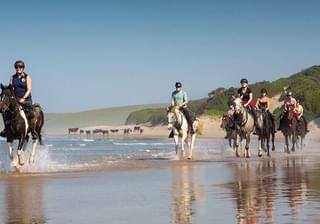

Another huge land mass on the eastern coast of Southern Africa where the best time to visit is from mid-May until mid-October. The sun shines as the rains tail off and the dry season starts in earnest. By October time as temperatures start to creep up and the Jacarandas start to bloom the rains are on their way and generally, you start to get the odd shower. This time is superb for birding as it's breeding season, so plenty of colour and some interesting behaviour. Avoid January and February which is cyclone season and March tends to be very wet too. April is realistically the start of their ‘season’ but we suggest caution as the wet weather can linger.
See trips to Madagascar


To put it simply, Mauritius and The Seychelles are pretty much a year-round destination. Historically the Indian Ocean had very distinct ‘wet’ and ‘dry’ seasons, however, with global climate change, it’s getting much harder to predict. But the good news is that even if you do experience some tropical rainfall, it’s still gorgeous and hot and usually passes pretty quickly….it's hotter and wetter from December to March time and cooler and dryer from June to September (which is the perfect temperature when travelling with young children), with the in-between offering a strong compromise.
Easterly trade winds are common in July and August, often impacting resorts on the eastern sides of larger land masses or smaller islands, such as those in the Seychelles. This is absolutely not a reason to avoid either island over those months as we simply recommend staying at hotels on the Western side which offers a natural protection from the trade winds. The Mauritius ‘low’ season (June – September) is considered by some to be too cool and for others, it offers a time when you can grab a great bargain in the sunshine and stay at a lovely hotel for a steal. The Seychelles is best enjoyed any time between May and November as although warmer during the wet season the temperatures don’t vary as much due to its proximity to the equator.
See trips to the Indian Ocean


This tiny nation occupies two specks of the Atlantic in the Gulf of Guinea, both are covered in fertile vegetation and seasons are almost non-existent due to the inconsistency of the weather patterns. But with its consistent equatorial temperatures, we always suggest this as a year-round destination. There is so much to do either in the sea or the lush interior a short sharp shower almost goes unnoticed. The main things to think about here is when the turtles are laying and hatching (November – March) and whale watching season (July – September). If we were to suggest a time to avoid then it would be the wetter month of April as no whales or turtles but probably rain.
See Sao Tome trips


Determining the best time to visit Africa is a nuanced decision that depends on your destination and desired experiences. From witnessing the great wildebeest migration in East Africa to exploring the diverse landscapes of South Africa, each region offers unique opportunities throughout the year. While the dry winter months from June to October generally provide excellent wildlife viewing across much of the continent, other factors such as regional climate patterns, specific animal behaviours, and cultural events should also influence your planning. Africa's vast size and incredible diversity means there's always somewhere spectacular to visit, regardless of the season. By carefully considering your interests and consulting with experienced travel planners, you can craft an unforgettable African adventure that aligns perfectly with your preferences and the optimal conditions for your chosen activities. So if you're dreaming of a classic safari, a tropical beach getaway or a cultural experience, Africa awaits and will not disappoint.
Start planning your tailor-made Africa holiday

Travel Expert